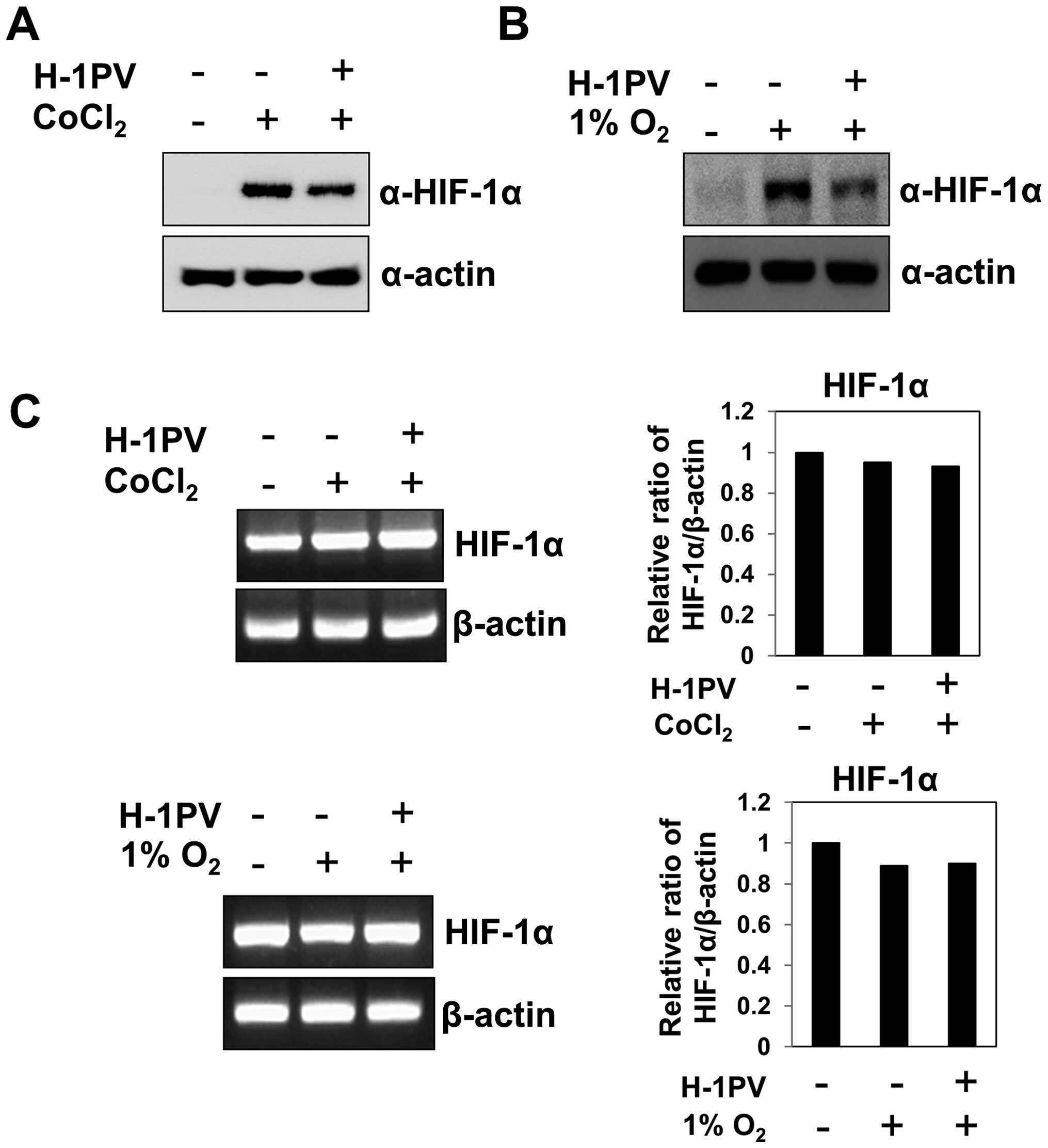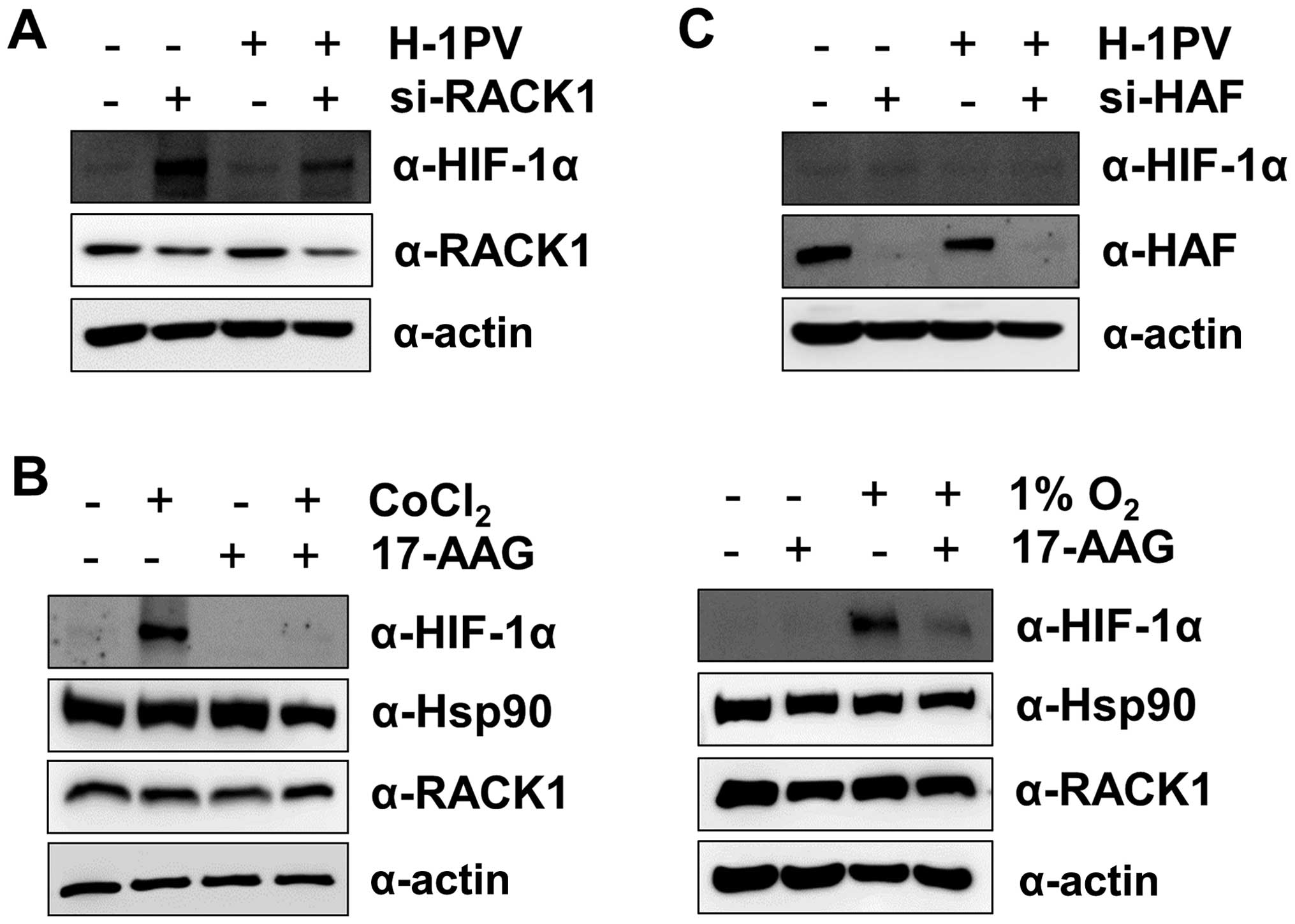|
1
|
Hockel M and Vaupel P: Tumor hypoxia:
definitions and current clinical, biologic, and molecular aspects.
J Natl Cancer Inst. 93:266–276. 2001. View Article : Google Scholar : PubMed/NCBI
|
|
2
|
Brown JM and Wilson WR: Exploiting tumour
hypoxia in cancer treatment. Nat Rev. 4:437–447. 2004. View Article : Google Scholar
|
|
3
|
Bardos JI and Ashcroft M:
Hypoxia-inducible factor-1 and oncogenic signalling. Bioessays.
26:262–269. 2004. View Article : Google Scholar : PubMed/NCBI
|
|
4
|
Jaakkola P, Mole DR, Tian YM, et al:
Targeting of HIF-alpha to the von Hippel-Lindau ubiquitylation
complex by O2-regulated prolyl hydroxylation. Science.
292:468–472. 2001. View Article : Google Scholar : PubMed/NCBI
|
|
5
|
Maxwell PH, Wiesener MS, Chang GW, et al:
The tumour suppressor protein VHL targets hypoxia-inducible factors
for oxygen-dependent proteolysis. Nature. 399:271–275. 1999.
View Article : Google Scholar : PubMed/NCBI
|
|
6
|
Tanimoto K, Makino Y, Pereira T and
Poellinger L: Mechanism of regulation of the hypoxia-inducible
factor-1 alpha by the von Hippel-Lindau tumor suppressor protein.
EMBO J. 19:4298–4309. 2000. View Article : Google Scholar : PubMed/NCBI
|
|
7
|
Bardeesy N and DePinho RA: Pancreatic
cancer biology and genetics. Nat Rev Cancer. 2:897–909. 2002.
View Article : Google Scholar : PubMed/NCBI
|
|
8
|
Maitra A and Hruban RH: Pancreatic cancer.
Annu Rev Pathol. 3:157–188. 2008. View Article : Google Scholar
|
|
9
|
Hawes RH, Xiong Q, Waxman I, Chang KJ,
Evans DB and Abbruzzese JL: A multispecialty approach to the
diagnosis and management of pancreatic cancer. Am J Gastroenterol.
95:17–31. 2000. View Article : Google Scholar : PubMed/NCBI
|
|
10
|
Safran H, Iannitti D, Ramanathan R, et al:
Herceptin and gemcitabine for metastatic pancreatic cancers that
overexpress HER-2/neu. Cancer Invest. 22:706–712. 2004. View Article : Google Scholar : PubMed/NCBI
|
|
11
|
Xiong HQ, Rosenberg A, LoBuglio A, et al:
Cetuximab, a monoclonal antibody targeting the epidermal growth
factor receptor, in combination with gemcitabine for advanced
pancreatic cancer: a multicenter phase II trial. J Clin Oncol.
22:2610–2616. 2004. View Article : Google Scholar : PubMed/NCBI
|
|
12
|
Van Cutsem E, van de Velde H, Karasek P,
et al: Phase III trial of gemcitabine plus tipifarnib compared with
gemcitabine plus placebo in advanced pancreatic cancer. J Clin
Oncol. 22:1430–1438. 2004. View Article : Google Scholar : PubMed/NCBI
|
|
13
|
Kasuya H, Takeda S, Nomoto S and Nakao A:
The potential of oncolytic virus therapy for pancreatic cancer.
Cancer Gene Ther. 12:725–736. 2005. View Article : Google Scholar : PubMed/NCBI
|
|
14
|
Kuhlmann KF, Gouma DJ and Wesseling JG:
Adenoviral gene therapy for pancreatic cancer: where do we stand?
Dig Surg. 25:278–292. 2008. View Article : Google Scholar : PubMed/NCBI
|
|
15
|
Cornelis JJ, Lang SI, Stroh-Dege AY,
Balboni G, Dinsart C and Rommelaere J: Cancer gene therapy through
autonomous parvovirus-mediated gene transfer. Curr Gene Ther.
4:249–261. 2004. View Article : Google Scholar : PubMed/NCBI
|
|
16
|
Paradiso PR, Williams KR and Costantino
RL: Mapping of the amino terminus of the H-1 parvovirus major
capsid protein. J Virol. 52:77–81. 1984.PubMed/NCBI
|
|
17
|
Chen AY and Qiu J: Parvovirus
infection-induced cell death and cell cycle arrest. Future Virol.
5:731–743. 2010. View Article : Google Scholar
|
|
18
|
Di Piazza M, Mader C, Geletneky K, et al:
Cytosolic activation of cathepsins mediates parvovirus H-1-induced
killing of cisplatin and TRAIL-resistant glioma cells. J Virol.
81:4186–4198. 2007. View Article : Google Scholar : PubMed/NCBI
|
|
19
|
Kiprianova I, Thomas N, Ayache A, et al:
Regression of glioma in rat models by intranasal application of
parvovirus h-1. Clin Cancer Res. 17:5333–5342. 2011. View Article : Google Scholar : PubMed/NCBI
|
|
20
|
Geletneky K, Huesing J, Rommelaere J, et
al: Phase I/IIa study of intratumoral/intracerebral or
intravenous/intracerebral administration of Parvovirus H-1
(ParvOryx) in patients with progressive primary or recurrent
glioblastoma multiforme: ParvOryx01 protocol. BMC Cancer.
12:992012. View Article : Google Scholar : PubMed/NCBI
|
|
21
|
Grekova SP, Aprahamian M, Daeffler L, et
al: Interferon gamma improves the vaccination potential of
oncolytic parvovirus H-1PV for the treatment of peritoneal
carcinomatosis in pancreatic cancer. Cancer Biol Ther. 12:888–895.
2011. View Article : Google Scholar : PubMed/NCBI
|
|
22
|
Dempe S, Stroh-Dege AY, Schwarz E,
Rommelaere J and Dinsart C: SMAD4: a predictive marker of PDAC cell
permissiveness for oncolytic infection with parvovirus H-1PV. Int J
Cancer. 126:2914–2927. 2010.
|
|
23
|
Halder S, Nam HJ, Govindasamy L, et al:
Production, purification, crystallization and structure
determination of H-1 Parvovirus. Acta Crystallogr Sect F Struct
Biol Cryst Commun. 68:1571–1576. 2012. View Article : Google Scholar : PubMed/NCBI
|
|
24
|
Cho IR, Koh SS, Min HJ, et al:
Down-regulation of HIF-1alpha by oncolytic reovirus infection
independently of VHL and p53. Cancer Gene Ther. 17:365–372. 2010.
View Article : Google Scholar : PubMed/NCBI
|
|
25
|
Jung CR, Hwang KS, Yoo J, et al: E2-EPF
UCP targets pVHL for degradation and associates with tumor growth
and metastasis. Nat Med. 12:809–816. 2006. View Article : Google Scholar : PubMed/NCBI
|
|
26
|
Liu YV, Baek JH, Zhang H, Diez R, Cole RN
and Semenza GL: RACK1 competes with HSP90 for binding to HIF-1alpha
and is required for O(2)-independent and HSP90 inhibitor-induced
degradation of HIF-1alpha. Mol Cell. 25:207–217. 2007. View Article : Google Scholar : PubMed/NCBI
|
|
27
|
Koh MY, Darnay BG and Powis G:
Hypoxia-associated factor, a novel E3-ubiquitin ligase, binds and
ubiquitinates hypoxia-inducible factor 1alpha, leading to its
oxygen-independent degradation. Mol Cell Biol. 28:7081–7095. 2008.
View Article : Google Scholar : PubMed/NCBI
|
|
28
|
Kim HY, Kim YH, Nam BH, et al: HIF-1alpha
expression in response to lipopolysaccaride mediates induction of
hepatic inflammatory cytokine TNFalpha. Exp Cell Res.
313:1866–1876. 2007. View Article : Google Scholar : PubMed/NCBI
|
|
29
|
Yoo YG, Oh SH, Park ES, et al: Hepatitis B
virus X protein enhances transcriptional activity of
hypoxia-inducible factor-1alpha through activation of
mitogen-activated protein kinase pathway. J Biol Chem.
278:39076–39084. 2003. View Article : Google Scholar : PubMed/NCBI
|
|
30
|
Wakisaka N, Kondo S, Yoshizaki T, Murono
S, Furukawa M and Pagano JS: Epstein-Barr virus latent membrane
protein 1 induces synthesis of hypoxia-inducible factor 1 alpha.
Mol Cell Biol. 24:5223–5234. 2004. View Article : Google Scholar : PubMed/NCBI
|
|
31
|
Kilani MM, Mohammed KA, Nasreen N, Tepper
RS and Antony VB: RSV causes HIF-1alpha stabilization via NO
release in primary bronchial epithelial cells. Inflammation.
28:245–251. 2004. View Article : Google Scholar
|
|
32
|
Haeberle HA, Durrstein C, Rosenberger P,
et al: Oxygen-independent stabilization of hypoxia inducible factor
(HIF)-1 during RSV infection. PLoS One. 3:e33522008. View Article : Google Scholar : PubMed/NCBI
|
|
33
|
Hwang II, Watson IR, Der SD and Ohh M:
Loss of VHL confers hypoxia-inducible factor (HIF)-dependent
resistance to vesicular stomatitis virus: role of HIF in antiviral
response. J Virol. 80:10712–10723. 2006. View Article : Google Scholar : PubMed/NCBI
|
|
34
|
Escuin D, Kline ER and Giannakakou P: Both
microtubule-stabilizing and microtubule-destabilizing drugs inhibit
hypoxia-inducible factor-1alpha accumulation and activity by
disrupting microtubule function. Cancer Res. 65:9021–9028. 2005.
View Article : Google Scholar : PubMed/NCBI
|
|
35
|
Welsh SJ, Williams RR, Birmingham A,
Newman DJ, Kirkpatrick DL and Powis G: The thioredoxin redox
inhibitors 1-methylpropyl 2-imidazolyl disulfide and pleurotin
inhibit hypoxia-induced factor 1alpha and vascular endothelial
growth factor formation. Mol Cancer Ther. 2:235–243.
2003.PubMed/NCBI
|
|
36
|
Yeo EJ, Chun YS, Cho YS, et al: YC-1: a
potential anticancer drug targeting hypoxia-inducible factor 1. J
Natl Cancer Inst. 95:516–525. 2003. View Article : Google Scholar : PubMed/NCBI
|
|
37
|
Mabjeesh NJ, Post DE, Willard MT, et al:
Geldanamycin induces degradation of hypoxia-inducible factor 1alpha
protein via the proteosome pathway in prostate cancer cells. Cancer
Res. 62:2478–2482. 2002.PubMed/NCBI
|
|
38
|
Lau CK, Yang ZF, Lam CT, Tam KH, Poon RT
and Fan ST: Suppression of hypoxia inducible factor-1alpha
(HIF-1alpha) by YC-1 is dependent on murine double minute 2 (Mdm2).
Biochem Biophys Res Commun. 348:1443–1448. 2006. View Article : Google Scholar : PubMed/NCBI
|
|
39
|
Sun HL, Liu YN, Huang YT, et al: YC-1
inhibits HIF-1 expression in prostate cancer cells: contribution of
Akt/NF-kappaB signaling to HIF-1alpha accumulation during hypoxia.
Oncogene. 26:3941–3951. 2007. View Article : Google Scholar : PubMed/NCBI
|














